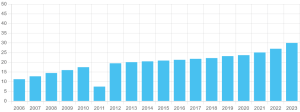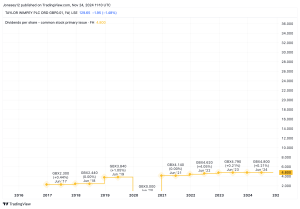BP (LSE: BP) shares have tumbled from their 12 April 12-month traded high of £5.40.
The drop reflects a similar decline in the global oil price, largely due to falling demand from China. This is due to an uncertain economic recovery following three years of Covid.
The other part of the oil price fall comes from rising global supply. Although oil cartel OPEC+ has rolling production cuts in place, these have been offset by increases in other countries.
The oil market outlook
Short term, the bearish outlook for oil might continue for a while on the same factors, in my view. It could change if the conflict between Israel and Iran (and its proxies) spirals into a wider Middle East war.
However, I believe this is likely to change over the long term. The key reason is that the transition to greener energy is likely to take longer than many envisage. Even the UN Climate Change Conference said in December 2023 that its 2050 net zero target needed to be done “in keeping with the science”.
Despite this, oil and gas investment has declined since 2014 in line with this transition timeline, leaving potential production gaps for the future. A supply and demand mismatch like this would support oil price gains for however long it lasted.
How does the core business look?
Since Murray Auchincloss took over as CEO in January, BP has modified its previously rigid energy transition stance.
It ditched its target to cut oil and gas output by 2030 in October and has scaled back its low-carbon hydrogen investments. It also plans to sell its US onshore wind operations.
On the other hand, it is developing its Gulf of Mexico assets and plans to develop four fields in Iraq. The former contains around 10bn barrels of oil and the latter around 9bn barrels.
Its Q3 results saw underlying replacement cost profit at $2.27bn (£1.76bn), exceeding forecasts of $2.05bn.
A key risk for BP in my view is government pressure for it to resume its previous energy transition programme. This would cause it to lose market share to competitors and damage its profitability.
However, as it stands, consensus analysts’ estimates are that BP’s earnings will grow at 26.6% a year to end-2026.
What about the share price and yield?
Earnings growth is what powers a firm’s share price and dividends over time.
Using other analysts’ figures and my own that factor this growth into a discounted cash flow analysis, BP shares are 49% undervalued.
Given the current price of £3.72, the fair value for the shares is £7.29. They may go lower or higher than that, of course, given the vagaries of the market.
Analysts also forecast that BP’s dividends will rise to 25.4p in 2025 and 26.7p in 2026. This would give respective yields (based on the current share price) of 6.8% and 7.2%. The current yield is 6.1%, given the 22.5p dividend in 2023.
Given these strong earnings projections and their impact on the share price and yield if realised I will be buying more BP stock very soon.
This post was originally published on Motley Fool






